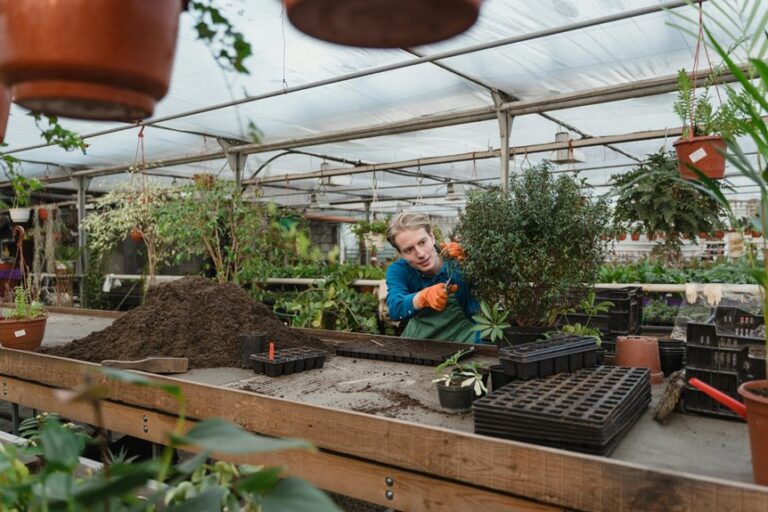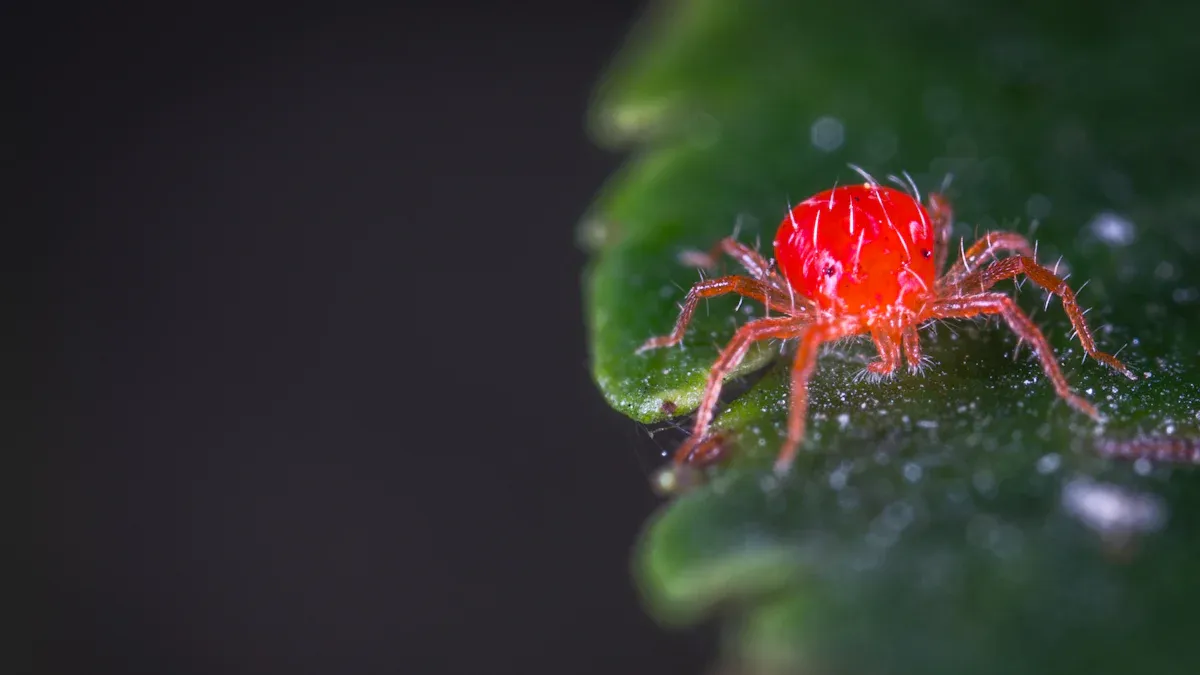
Zinnias add vibrant colors to your garden and attract butterflies, making them a favorite among gardeners. However, pests like aphids and spider mites can harm their health and beauty. These pesky invaders can lead to stunted growth and poor bloom quality. For example, aphids thrive in hot, dry weather and can severely damage your zinnias. To keep your blooms looking their best, it’s crucial to identify and treat these Zinnia Plant Pests promptly.
Pest Type | Impact on Zinnia Health and Bloom Quality |
|---|---|
Aphids | Can cause damage, especially in hot, dry weather. |
Spider Mites | Thrive in hot, dry conditions, leading to reduced plant vigor. |
Whiteflies | Contribute to overall plant stress and can affect flower quality. |
Taking action against these pests ensures your zinnias remain healthy and full of life!
Key Takeaways
Identify common zinnia pests like aphids, spider mites, and whiteflies. Look for signs such as yellowing leaves, webbing, and sticky residue.
Use organic solutions like neem oil and insecticidal soap to manage pests. These methods are effective and eco-friendly.
Maintain healthy soil and proper watering practices. This helps your zinnias thrive and reduces the risk of pest infestations.
Regularly inspect your plants for early signs of pests. Catching issues early can save your zinnias from serious damage.
Promote good air circulation by spacing plants properly. This reduces humidity and helps prevent fungal diseases.
Zinnia Pests
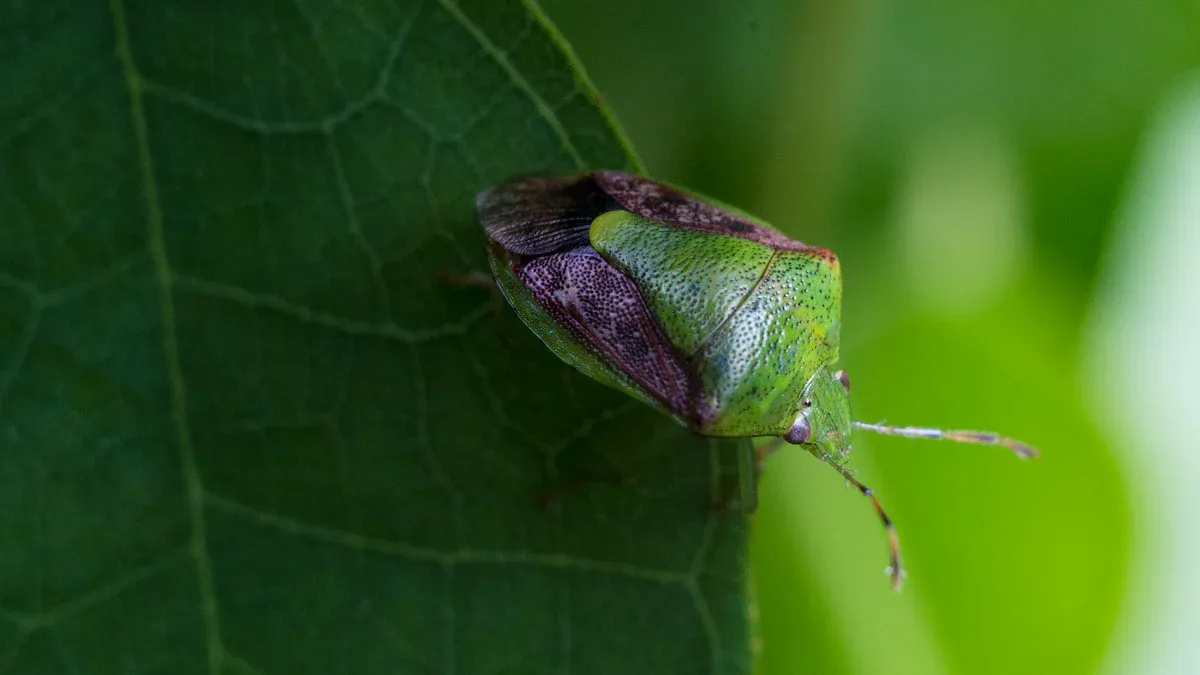
Aphids
Aphids are tiny, soft-bodied insects that often appear in clusters on your zinnias. They feed on plant sap, which can weaken your plants and lead to stunted growth. If you notice curled leaves or a sticky residue on your plants, you might have an aphid problem. These pests can multiply quickly, especially in warm weather. Luckily, natural predators like ladybugs and lacewings can help control their populations.
Spider Mites
Spider mites are another common pest that can wreak havoc on your zinnias. These tiny arachnids thrive in hot, dry conditions. You may spot fine webbing between leaves, which is a telltale sign of their presence. Here are some symptoms to watch for:
Symptom | Description |
|---|---|
Webbing | Fine, silken webbing found between plant parts, indicating spider mite presence. |
Stippling on Leaves | Tiny white or yellow spots on leaves due to mite feeding, often requiring magnification to see. |
Yellowing Leaves | Leaves turning yellow and dropping off due to nutrient flow interruption from mite damage. |
Stunting on New Growth | New growth is misshapen or fails to unfurl, indicating loss of plant vigor. |
Dusty Leaf Appearance | Leaves appear dusty, often due to spider mite webbing that can be washed off. |
Spider mites can reproduce rapidly, laying up to 100 eggs in just a few weeks. If you see these signs, act quickly to prevent further damage.
Whiteflies
Whiteflies are small, white insects that can be found on the undersides of leaves. They lay yellow or brown eggs, which can be hard to spot. When disturbed, adult whiteflies flutter around like tiny moths. Their presence can lead to yellowing leaves and reduced bloom quality. The lifecycle of whiteflies takes about 3 weeks, so early detection is key to managing these pests effectively.
Thrips
Thrips are slender insects that can cause significant damage to your zinnias. They feed on flower petals, leading to discoloration and distortion. You might notice stippled or scarred petals, which can ruin the appearance of your blooms. Thrips can stunt plant growth and make leaves papery. Keeping an eye on your flowers will help you catch these pests before they cause too much harm.
By understanding these zinnia plant pests and their impacts, you can take proactive steps to protect your beautiful blooms!
Pest Identification
Signs of Infestation
Recognizing the signs of zinnia insect pests early can save your plants from serious damage. Here are some common indicators to watch for:
Aphids: You might see them congregating on stems and leaves. They cause distortion and can leave a sticky residue known as honeydew.
Spider Mites: Look for yellow stippling on leaves and fine webbing. These tiny pests can be hard to spot, but their damage is noticeable.
Broad Mites: These pests cause leaf curling and thickening, leading to dwarfed leaves.
Leafhoppers: They create mottled foliage with white or yellow spots, making your zinnias look unhealthy.
Thrips: You may notice distorted flowers and silvery streaks on leaves, which can ruin the beauty of your blooms.
Distorted Flowers and Stunted Growth
Pest damage can lead to distorted flowers and stunted growth in your zinnias. Here are some symptoms to keep an eye out for:
Symptoms | Pest Damage | Nutrient Deficiency |
|---|---|---|
Leaf Color | Yellowing with distinct patterns | Uniform yellowing or specific patterns |
Leaf Texture | Wilting, curling, or spots | Generally smooth, but may show signs of stress |
Additional Signs | Visible pests, webbing, sticky residue | No visible pests, but may show other deficiency signs |
If you notice yellowing leaves, twisted or curled leaves, or even sticky residue on your plants, these could be signs of pest infestation. Stunted growth often accompanies these symptoms, leading to abnormally developed new leaves.
By staying vigilant and recognizing these signs, you can take action before the pests cause too much harm to your zinnias. Regularly inspect your plants to ensure they remain healthy and vibrant!
Treatment Methods
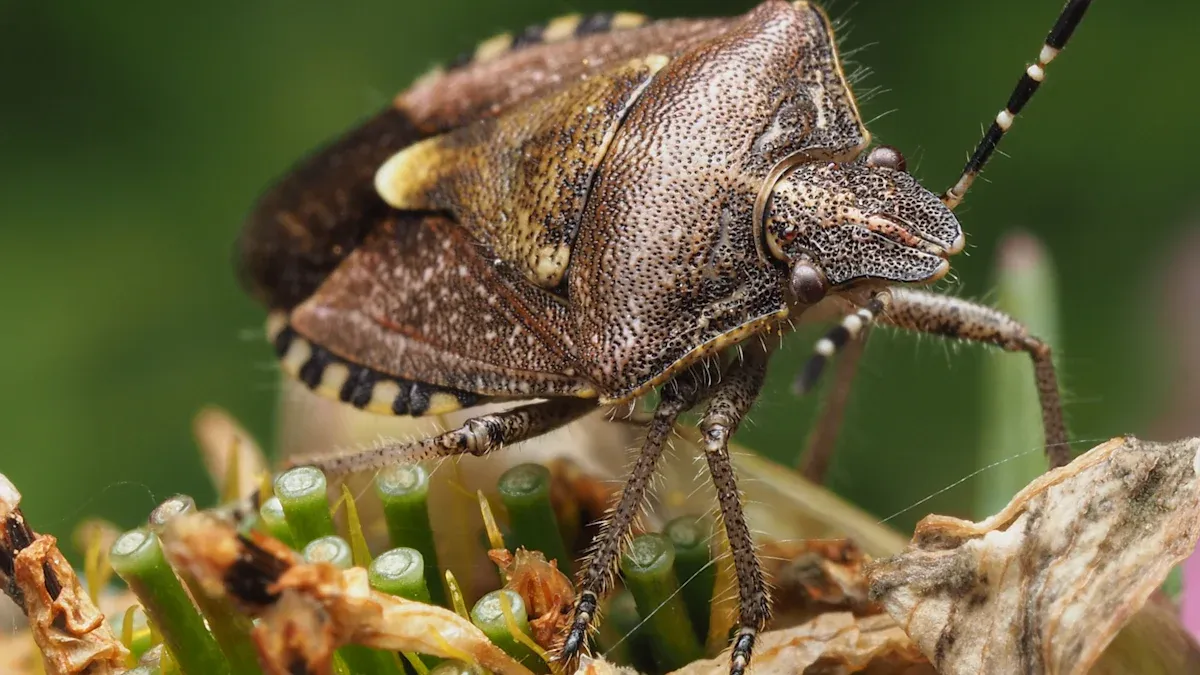
When it comes to managing pests on your zinnias, you have several effective treatment options. Whether you prefer organic solutions, chemical treatments, or cultural practices, each method can help you maintain the health of your zinnias and ensure vibrant blooms.
Organic Solutions
If you want to keep your garden eco-friendly, organic solutions are a great choice. One of the most popular options is neem oil. This natural pesticide works wonders against aphids and spider mites. It interferes with their reproductive cycles and prevents them from feeding. The active ingredient, azadirachtin, not only repels these pests but can also suffocate them upon contact. Applying neem oil regularly can significantly reduce pest populations on your zinnias.
Here are some other organic methods you can try:
Insecticidal Soap: This soap can effectively kill soft-bodied insects like aphids and whiteflies. Spray it directly on the pests for the best results.
Diatomaceous Earth: This powdery substance can deter crawling insects. Sprinkle it around your zinnias to create a barrier.
Companion Planting: Planting marigolds alongside your zinnias can help repel harmful insects and attract beneficial ones.
Chemical Treatments
Sometimes, you may need to resort to chemical treatments for more severe infestations. Here’s a table of some insecticides that are safe for use on zinnias, along with their efficacy rates:
Insecticide | Efficacy Rate (%) |
|---|---|
Entrust | 65.6 |
Azera | 29.3 |
Neemix | 19.1 |
PyGanic | 20.7 |
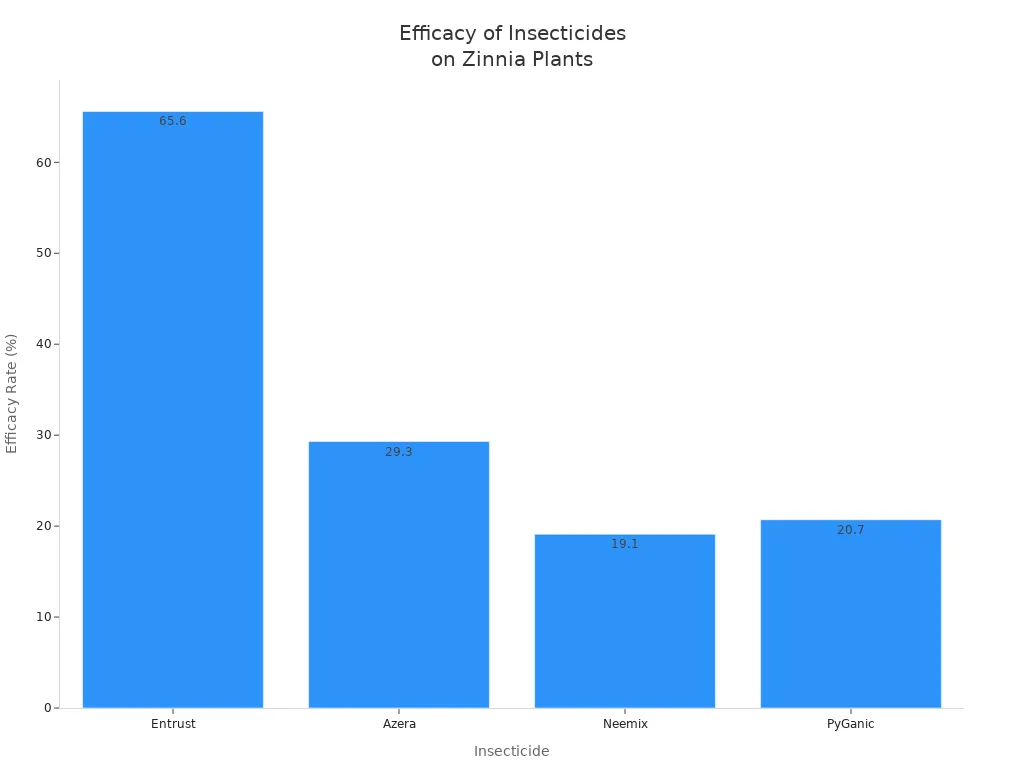
While chemical treatments can be effective, be cautious. They can pose risks to pollinators visiting your zinnia flowers. Here are some potential concerns:
Systemic insecticides affect all parts of zinnia flowers, including pollen and nectar, which are crucial for pollinators.
Neonicotinoids are particularly toxic and can impair pollinator navigation and reproduction.
More than 90% of pollen samples from bee hives in agricultural areas contain multiple pesticide residues, which can heighten toxicity.
Cultural Practices
Preventing pest issues before they start is always the best strategy. Here are some cultural practices you can adopt to minimize pest outbreaks on your zinnias:
Proper Watering: Avoid overwatering or over-fertilizing your plants. This helps prevent weak growth that pests love to target.
Air Circulation: Ensure adequate spacing between zinnia plants to promote air circulation. This reduces humidity and the risk of fungal diseases.
Regular Monitoring: Keep an eye on your plants. Early detection of pests can save your zinnias from serious damage.
Sanitize Tools: Clean your gardening tools regularly to prevent transferring pests from one plant to another.
By combining these treatment methods, you can effectively control pests and keep your zinnias healthy and beautiful. Remember, a proactive approach is key to maintaining vibrant blooms!
General Care for Zinnias
Taking care of your zinnias goes beyond just dealing with pests. Healthy plants are less likely to attract common garden pests. Here are some best practices to keep your zinnias thriving.
Soil Health
Start with the right soil. Zinnias thrive in loamy, well-draining soil enriched with compost or organic matter. Aim for a pH between 6.0 and 7.5. If your soil is heavy clay, mix in compost to improve drainage. Here’s a quick look at what experts recommend:
Source | Key Points |
|---|---|
Garden Delivery | Zinnias thrive in loamy, well-draining soil enriched with compost. Ideal pH is 6.0–7.5. |
University of Minnesota | Rich organic matter and good drainage are essential for quick growth. |
Almanac | Full sun and good air circulation help prevent diseases like powdery mildew. |
Watering Practices
Watering your zinnias correctly is crucial. Overwatering can lead to standing water on leaves, which encourages fungal diseases like powdery mildew. Here are some reasons to avoid overwatering:
It creates high humidity and poor airflow, worsening disease issues.
Excess water can drown the roots, making your zinnias more vulnerable to pests and diseases.
Instead, water your zinnias deeply but infrequently. This encourages strong root growth and helps them withstand dry spells.
Air Circulation
Good air circulation is vital for keeping your zinnias healthy. When plants are too close together, humidity builds up, creating a perfect environment for fungal diseases. To improve airflow, follow these spacing tips:
Plant zinnias 7×7 inches apart in arid climates.
In humid regions, space them 9–12 inches apart.
For tall varieties, aim for 8–24 inches apart.
By ensuring proper spacing, you can significantly reduce the risk of fungal infections. Remember, healthy zinnias are less likely to attract common garden pests!
Taking care of your zinnias means being proactive about pest management. Regularly inspecting your plants helps you catch issues early. You can use various strategies to keep your garden thriving. Consider these integrated pest management methods:
Cultural Controls: Rotate crops and improve soil quality to prevent pests.
Mechanical Controls: Use row covers and traps to manage pests effectively.
Biological Controls: Introduce natural predators to maintain a balanced ecosystem.
Chemical Controls: Use chemicals only as a last resort to minimize environmental impact.
By following these tips, you can enjoy vibrant blooms all season long!
FAQ
What are the most common pests that affect zinnias?
The most common pests include aphids, spider mites, whiteflies, and thrips. Each of these pests can cause significant damage to your zinnias if not managed promptly.
How can I tell if my zinnias have pests?
Look for signs like yellowing leaves, distorted flowers, sticky residue, or fine webbing. Regularly inspecting your plants helps catch infestations early.
What organic treatments can I use for zinnia pests?
You can use neem oil, insecticidal soap, or diatomaceous earth. These natural solutions effectively control pests without harming beneficial insects.
How often should I check my zinnias for pests?
Check your zinnias at least once a week, especially during warm weather. Early detection is key to preventing serious damage.
Can I prevent pests from attacking my zinnias?
Yes! Maintain healthy soil, ensure proper watering, and promote good air circulation. These practices help keep your zinnias strong and less attractive to pests.


